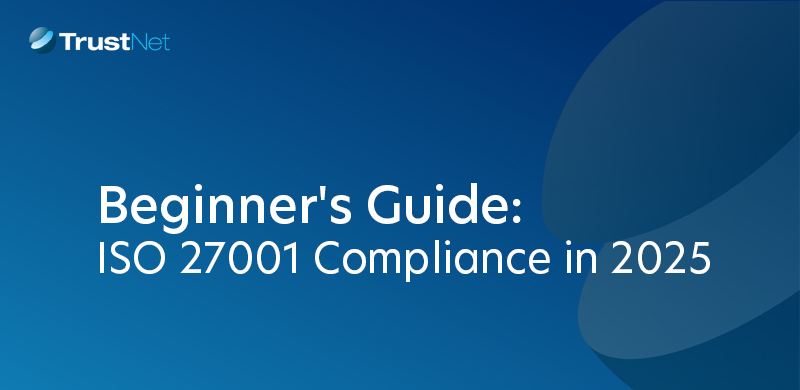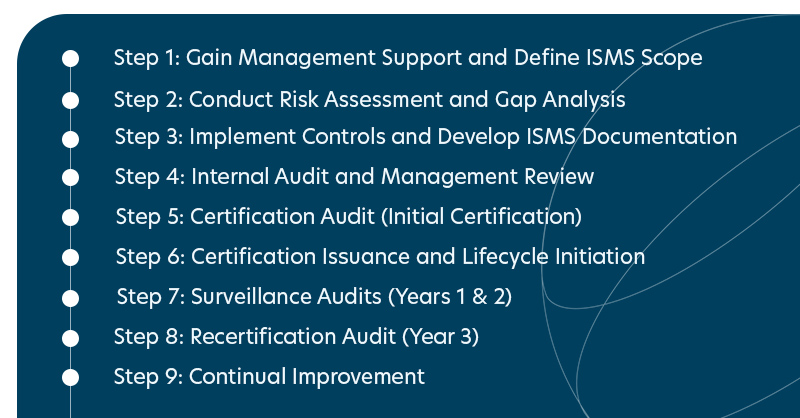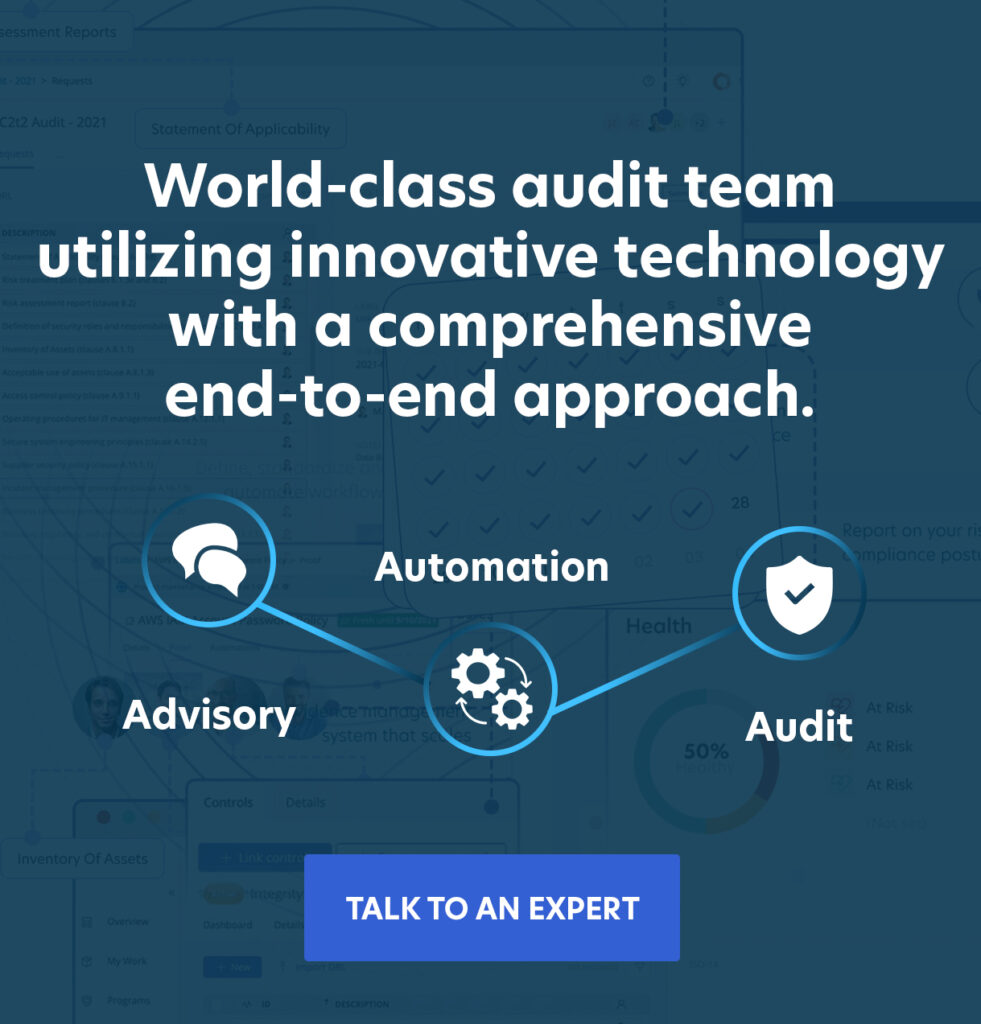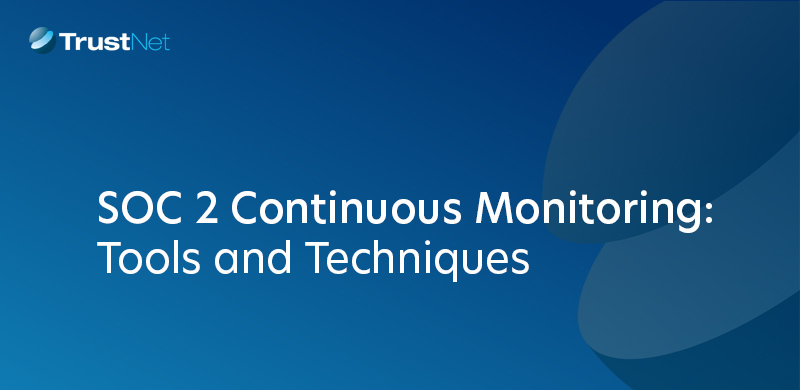Beginner’s Guide: ISO 27001 Compliance in 2025

TL;DR
ISO 27001 is the global standard for securing sensitive information through a formal Information Security Management System (ISMS). This guide breaks down everything beginners need to know about ISO 27001 compliance in 2025, including core requirements, updated controls, a step-by-step certification roadmap, costs, and best practices. If you’re handling customer or regulated data, achieving ISO 27001 certification builds trust, improves security, and gives you a real competitive edge.
ISO 27001 is the global standard for establishing, implementing, maintaining, and improving an Information Security Management System (ISMS). Designed to help organizations secure sensitive data, it sets clear, measurable requirements for protecting information assets against threats like breaches, leaks, and unauthorized access.
For SaaS providers, cloud-based businesses, and any company managing customer or regulated data, ISO 27001 compliance strengthens your security posture, builds trust with clients, and helps you meet regulatory demands across global markets.
If you’re new to ISO 27001 or exploring certification in 2025, this guide will walk you through everything you need to know.
You’ll learn:
-
- What ISO 27001 is and why it matters
- The core controls and structure of the ISO 27001 standard
- A step-by-step roadmap to prepare, implement, and certify your ISMS
- Tips to maintain compliance and embed security best practices
Let’s break it down, step by step.
What is ISO 27001? Understanding the Standard
Published by the International Organization for Standardization (ISO) and the International Electrotechnical Commission (IEC), it provides a systematic framework for managing risks to information security.
The ISO 27001 standard supports organizations in identifying threats, evaluating risks, and applying appropriate controls to safeguard data in all forms, namely digital, physical, or cloud-based. It is applicable to businesses of all sizes and industries.
ISO 27001 covers:
-
- Information security risk assessment and treatment
- Security policy and governance structure
- Implementation and operation of risk-based controls
- Performance evaluation and continual improvement
Core components of the ISO 27001 framework include:
-
- Information Security Management System (ISMS): A structured set of policies, procedures, and controls that manage information risks.
- Annex A (2022): Contains 93 reference controls grouped into four themes: Organizational, People, Physical, and Technological.
- Risk Assessment and Risk Treatment Plan: Identifies and mitigates potential threats based on business context.
- Statement of Applicability (SoA): Lists all applicable controls, explains their relevance, and documents implementation decisions.
ISO 27001 empowers organizations to secure sensitive data, meet regulatory obligations, and establish trust with stakeholders through a proactive, risk-driven approach.
Ready to Get ISO 27001 Certified?
TrustNet delivers expert-led ISO 27001 audit management and continuous compliance services, built for organizations that are ready to certify and stay compliant
Why ISO 27001 Matters: Benefits and Market Expectations
ISO 27001 compliance protects your business from the rising costs of cyber threats and the growing pressure of regulatory demands. Without it, organizations face serious consequences:
-
- Data breaches that damage brand reputation
- Lost business from enterprise clients and regulated industries
- Legal penalties from non-compliance with laws like GDPR or HIPAA
- Delays in sales cycles due to failed security reviews
Certification shows that your company takes information security seriously. It signals maturity, trustworthiness, and operational discipline.
ISO 27001 certification helps your business:
-
- Earn trust with customers, partners, and regulators
- Accelerate enterprise deals through streamlined security reviews
- Differentiate from competitors in crowded SaaS and cloud markets
- Meet international compliance and privacy expectations
Potential customers and partners, especially in B2B and SaaS, now expect ISO 27001 as a baseline.
ISO 27001 Controls: Main Clauses and Controls
To comply with ISO 27001, your organization must establish a formal ISMS and meet both the core clause controls and the updated Annex A control set.
The standard includes 10 clauses. Clauses 4 to 10 are mandatory and define how to structure, manage, and improve your ISMS:
-
- Clause 4: Understand your organization’s context and interested parties
- Clause 5: Establish leadership roles and define responsibilities
- Clause 6: Plan for risks, opportunities, and security objectives
- Clause 7: Allocate resources, ensure awareness, and manage documentation
- Clause 8: Operate and control processes related to information security
- Clause 9: Measure performance and conduct internal audits
- Clause 10: Take corrective action and drive continual improvement
Annex A of ISO/IEC 27001:2022 introduces 93 controls, grouped into four domains:
-
- Organizational (37 controls)
- People (8 controls)
- Physical (14 controls)
- Technological (34 controls)
Organizations must also maintain a risk assessment, a risk treatment plan, and a Statement of Applicability (SoA) that maps selected controls to identified risks.
Meeting these requirements ensures readiness for certification and strengthens your security posture.
The ISO 27001 Certification Journey: Step-by-Step Roadmap
Achieving ISO 27001 certification requires a structured approach built on leadership commitment, risk-based decision-making, and formal audits. Below is a clear roadmap that outlines how organizations can implement and certify their ISMS.

Step 1: Gain Management Support and Define ISMS Scope
- Executive Buy-in: Obtain leadership support for ISMS funding, direction, and accountability.
- Scope Definition: Determine which sites, departments, assets, and information systems the ISMS will cover.
- ISMS Boundaries: Document external and internal interfaces, regulatory context, and stakeholders.
Step 2: Conduct Risk Assessment and Gap Analysis
- Identify Information Assets: Catalog sensitive data, processes, and supporting systems.
- Evaluate Risks: Assess threats, vulnerabilities, and likelihood/impact using a risk assessment methodology.
- Gap Analysis: Benchmark your current security posture against ISO 27001 controls (Annex A) and identify control deficiencies.
Step 3: Implement Controls and Develop ISMS Documentation
- Policies and Procedures: Create documentation including risk treatment plans, incident response, access control, etc.
- Control Implementation: Deploy security controls based on Annex A and your Statement of Applicability (SoA).
- Evidence Collection: Record logs, training sessions, control settings, and other compliance artifacts.
Step 4: Internal Audit and Management Review
- Internal Audit: Conduct formal audits to test ISMS effectiveness and identify nonconformities.
- Management Review: Hold top-level review meetings to evaluate audit results, KPIs, risk status, and opportunities for continual improvement.
Step 5: Certification Audit (Initial Certification)
Performed by an accredited external certification body and consists of two stages:
- Stage 1 Audit:
-
- Off-site document review.
- Verifies ISMS readiness, documentation completeness, and scope clarity.
- Stage 2 Audit:
-
- On-site or remote evaluation.
- Examines implementation and effectiveness of controls across your defined scope.
- Results in a certification decision based on evidence and conformity.
Step 6: Certification Issuance and Lifecycle Initiation
- Certification Validity: The ISO 27001 certificate is valid for 3 years from the date of issuance.
- You enter a 3-year certification lifecycle, requiring ongoing surveillance and renewal.
Step 7: Surveillance Audits (Years 1 & 2)
To maintain certification, the organization must pass annual surveillance audits:
- Surveillance Audit 1 (~12 months post-certification):
- Sample-based review of key controls, risk treatment, incidents, and improvements.
- Surveillance Audit 2 (~24 months post-certification):
- Covers different or higher-risk areas, evaluates management commitment, and ensures sustained performance.
Step 8: Recertification Audit (Year 3)
- A comprehensive reassessment conducted before your certificate expires.
- Includes:
- Review of your full ISMS scope.
- Confirmation of continual improvement.
- New risk context or changes to organizational structure.
Successful completion restarts the next 3-year cycle with a renewed certificate.
Step 9: Continual Improvement
Throughout the lifecycle, organizations must:
- Monitor and measure ISMS performance against objectives.
- Conduct regular internal audits and management reviews.
- Address nonconformities and implement corrective actions.
- Stay responsive to emerging threats and business changes.
Following this roadmap helps your team achieve certification and maintain ISO 27001 compliance with confidence.
ISO 27001 Audit, Cost, and Tools
Preparing for an ISO 27001 audit requires time, resources, and the right tools. Depending on ISMS maturity, organizational size, and scope, most organizations complete the certification process in several weeks if major non-confirmative were not found.
ISO 27001 Audit Costs
Certification costs vary widely. Small organizations can expect to spend $10,000 to $20,000, while mid-sized and larger enterprises may invest $30,000 to $50,000+, depending on:
-
- Number of sites and employees
- Complexity of infrastructure
- Scope of the ISMS
- Costs vary by region, certification body, and consulting or automation tools.
- Internal resource allocation (e.g., GRC staff time)
Streamline Compliance with GhostWatch
GhostWatch is a Managed Security and Compliance Platform built to simplify ISO 27001 compliance and audit readiness. Our experts manage the heavy lifting, so your team can stay focused on innovation and growth, not paperwork and risk reports.
Key benefits of GhostWatch include:
-
- 24/7 vulnerability monitoring to detect and respond in real time
- Automated evidence collection to streamline audits and reduce manual work
- Custom-fit compliance frameworks aligned to your infrastructure
- Live dashboards with audit-readiness scores and executive-level reporting
- Integrated threat intelligence to prevent issues before they disrupt audits
- Dedicated project management and audit facilitation from seasoned compliance experts
Whether you’re preparing for ISO 27001 certification or maintaining continuous compliance, GhostWatch delivers real-time visibility, expert oversight, and cost-effective peace of mind.
Best Practices for ISO 27001 Success
Follow these best practices to strengthen your ISMS and stay audit-ready.
-
- Start with a readiness assessment. Evaluate your current security posture through a gap analysis against ISO 27001 controls.
- Document everything. Maintain up-to-date policies, procedures, risk assessments, and audit trail. Documentation proves you’re in control.
- Automate where possible. Use compliance platforms like GhostWatch to streamline risk assessments, monitor control effectiveness, and reduce manual effort.
- Train your people. Build a culture of security awareness. Ensure employees understand their role in protecting data.
- Review and improve regularly. Use internal audits and management reviews to identify gaps and implement corrective actions.
Consistency is key. ISO 27001 is a continuous process. Following these practices helps you embed compliance into daily operations and reduce risk long term.
ISO 27001 Beginner FAQs
— Who needs ISO 27001 certification?
Certification benefits organizations that handle sensitive, regulated, or customer data, especially in cloud, fintech, and healthcare. It’s essential for winning enterprise deals and meeting global security expectations.
— What are the main clauses and controls?
ISO/IEC 27001:2022 includes 7 mandatory clauses (4–10) and 93 Annex A controls grouped into four categories: Organizational, People, Physical, and Technological.
— How long does ISO 27001 certification take?
Most organizations complete certification within several weeks, depending on scope, resources, and ISMS maturity.
— What is the Statement of Applicability (SoA)?
The SoA lists all Annex A controls, identifies which ones are applicable and implemented, and justifies not applicable controls. It links your risk assessment to your control choices.
— What are common ISO 27001 audit pitfalls?
Lack of documentation, unclear scope, poorly defined controls, and weak internal audits often cause delays or nonconformities.
What to Do Next: Your Path to ISO 27001 Compliance
ISO 27001 compliance protects your data, proves your credibility, and opens doors to bigger deals. But getting certified takes planning, precision, and expert execution.
Start strong with a gap analysis. Identify exactly where you stand and what it takes to reach certification.
Book a free consultation with a TrustNet ISO 27001 expert.
We’ll build your custom roadmap, prioritize critical fixes, and guide you through each step of the certification process. Our team has helped hundreds of businesses achieve ISO 27001 compliance, now it’s your turn.
Subscribe to the TrustNet Newsletter
actionable cybersecurity strategies, and TrustNet’s cutting-edge solutions.




